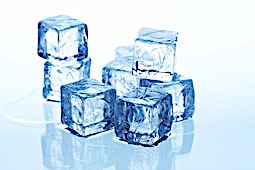Cryotherapy

The six different forms of application are:
- ice massage
- ice pack
- ice compress
- cryo air (cold air)
- cryo chamber (cold air chamber or cold air bath)
- ice baths (full or partial baths)
Indication and effects:
Tiredness, poor concentration
increased activity of the reticular substance, muscle action
Hypotonic dysregulation
positive effect on peripheral vascular resistance and blood pressure
Chronic venous insufficiency
improved venous pressure and venous return, circulatory centralization
Tachycardia
ice-induced bradycardia
Shallow breathing, slow breathing (bradypnoea)
deeper respiration, increased frequency
Contracture
cryo-anaesthesia
Superficial and deeper pain (vertebrogenic or visceral)
analgesic and anti-ischaemic due to reactive hyperaemia
Acute and subacute inflammatory processes, burns antiphlogistic
Haemorrhagic diathesis
antihaemorrhagic
Oedema, blockage (non-cardial)
antihaematomatous
General effects:
lowering of peripheral excitability and nerve conduction speed, raising of pain threshold.
The temperature of the ice medium will depend on the clinical indications, and varies between +3° and -180°C.

 DE
DE
 FR
FR